12 Rare Rifle Models from the Early 1900s That Are Museum-Worthy
Rifles from the early 1900s have become highly sought-after collectibles, admired for their craftsmanship, historical significance, and unique designs. Many of these rare rifle models played pivotal roles in global conflicts, shaping the course of military history. From bolt-action rifles to iconic designs, these firearms are museum-worthy artifacts. Collectors and enthusiasts are drawn to the stories behind each rifle, adding to their appeal.
This post may contain affiliate links, which helps keep this content free. Please read our disclosure for more info.
Winchester Model 1886 Express Rifle
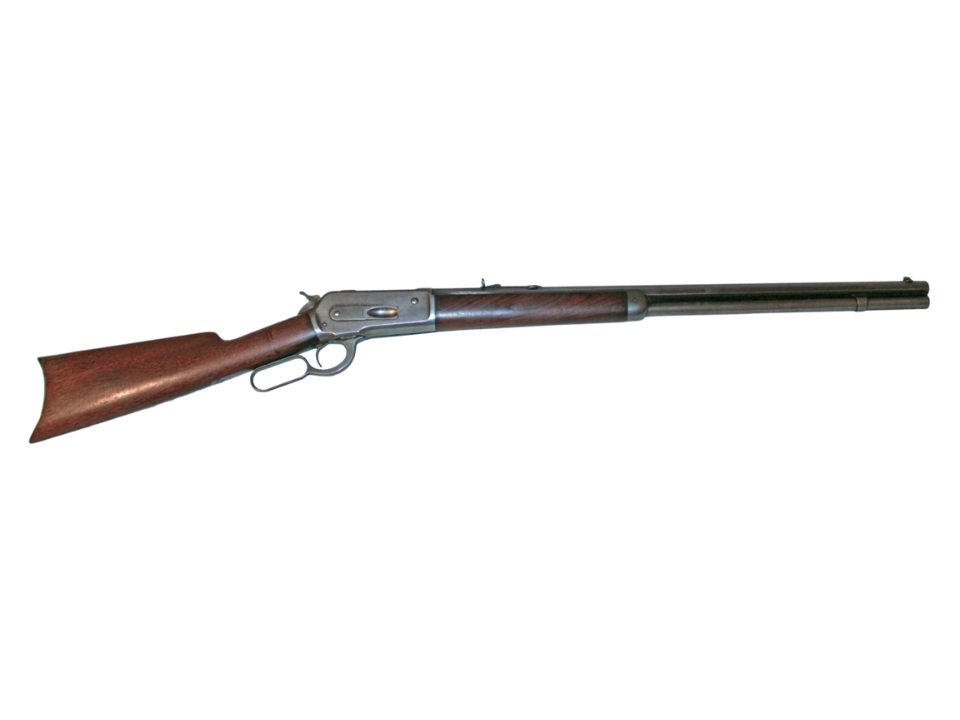
The Winchester Model 1886 Express stands as a testament to the pinnacle of 19th-century firearms craftsmanship. Chambered in .50-110 WCF, this rifle was designed for big game hunting, particularly in Africa. Its takedown feature allowed for easy transportation, making it a favorite among explorers and hunters of the era.
This particular model is renowned for its intricate engraving, featuring scenes of wildlife such as a crouching cougar and a grazing deer. The craftsmanship is attributed to master engraver John Ulrich. In 2018, a beautifully engraved and exceptionally rare Winchester Model 1886 Express rifle sold for $1,178,750 during the September Premier Auction.
Savage Model 99
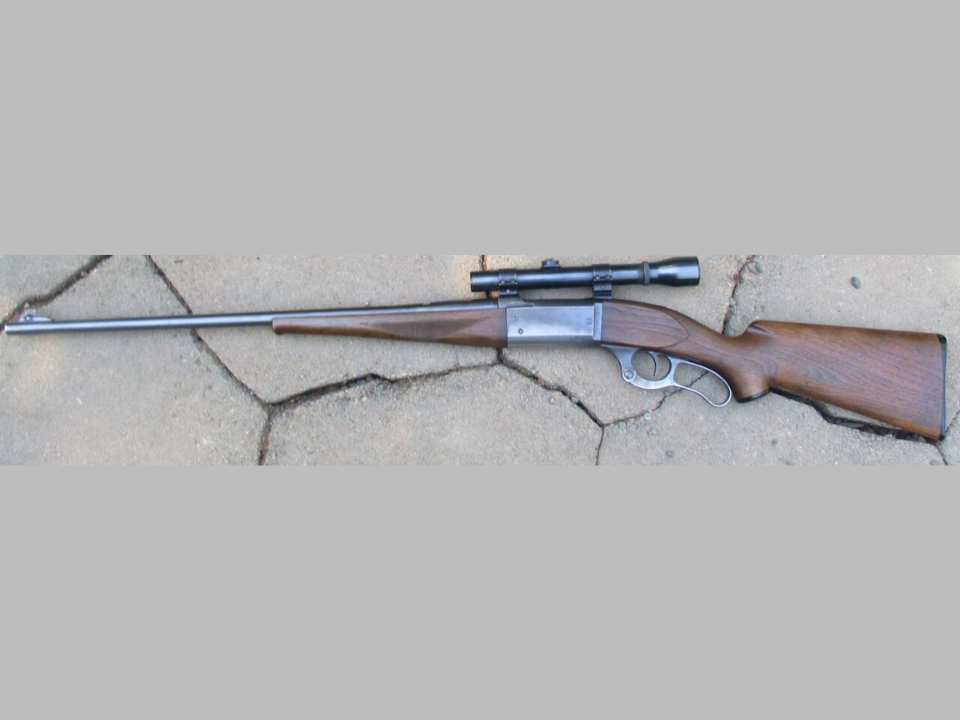
Introduced in 1899, the Savage Model 99 was a revolutionary lever-action rifle that featured a hammerless design and a unique rotary magazine. Its innovative features made it popular among hunters and marksmen. The rifle was chambered in various calibers, including .303 Savage and .30-30 Winchester, catering to a wide range of shooting preferences.
The Model 99’s design allowed for quick follow-up shots, making it effective in hunting scenarios. Its durability and reliability have made it a sought-after collector’s item. The rifle’s production spanned nearly a century, ceasing in 1997, which adds to its historical significance and appeal among firearm enthusiasts. Depending on condition and specific model, the Savage Model 99 can range in value from $500 to $2,500
Lee-Enfield No. 1 Mk III
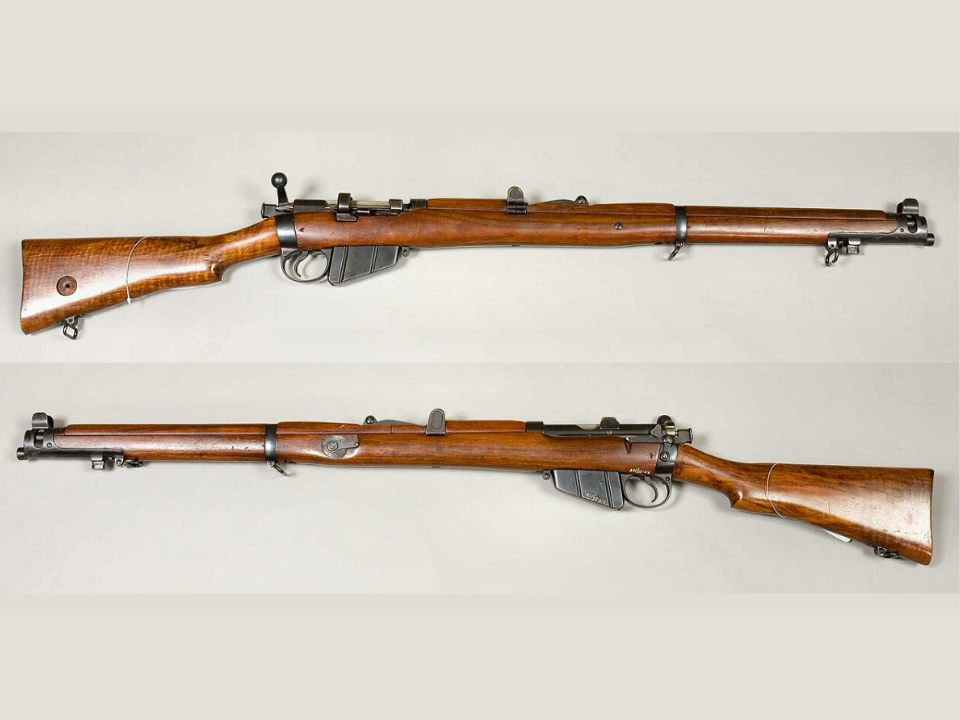
The Lee-Enfield No. 1 Mk III was the standard-issue rifle for British and Commonwealth forces during both World Wars. Chambered in .303 British, it featured a ten-round magazine and was known for its rapid rate of fire. The rifle’s design was based on the earlier Lee-Metford, incorporating improvements for modern warfare.
Its robust construction and reliability in various combat conditions made it a favorite among soldiers. The Mk III variant introduced in 1904 became the most widely used, with production continuing until 1957. The rifle’s historical importance and widespread use make it a valuable piece for collectors and historians alike. In good condition, the Lee-Enfield No. 1 Mk III can be valued between $300 and $900, depending on factors like manufacturer and markings.
Berthier Mle 1916 Carbine
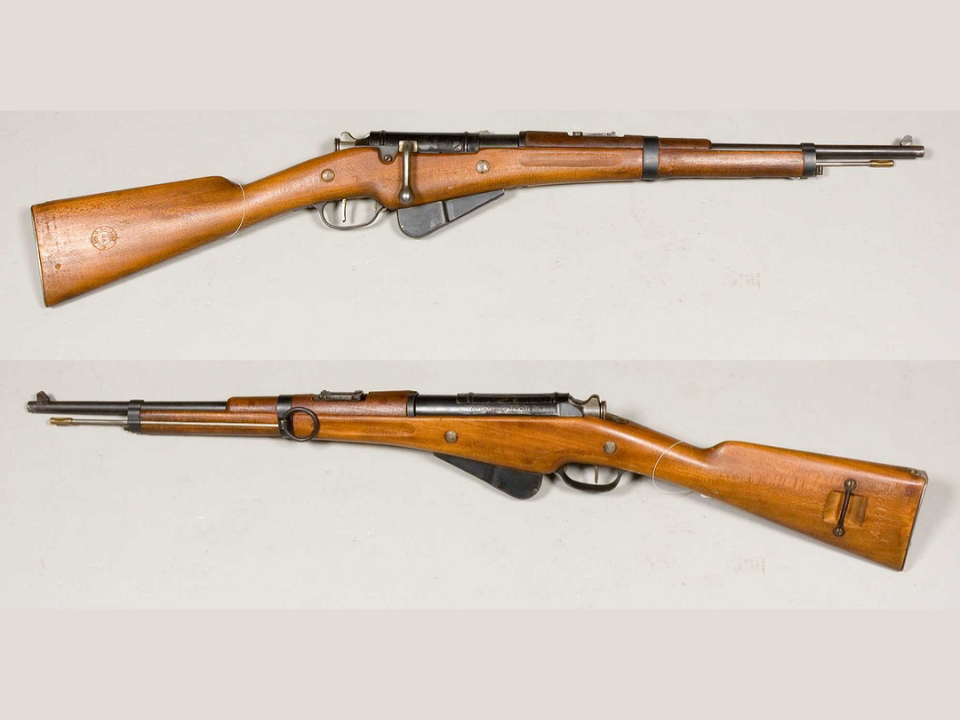
The Berthier Mle 1916 Carbine was a French bolt-action rifle designed for use by mounted troops during World War I. Chambered in 8×50mmR Lebel, it featured a three-round Mannlicher-style en bloc clip, allowing for faster reloading compared to traditional five-round magazines. Its shorter barrel made it more maneuverable in close combat situations.
The Mle 1916 was favored for its lightweight design and ease of handling. Post-war, some of these carbines were converted to use the 7.5×54mm French cartridge, extending their service life. The rifle’s unique design and historical context make it a rare find for collectors of early 20th-century military firearms. The value of a Berthier Mle 1916 Carbine varies, but well-preserved examples can be found in the $800 to $1,200 range.
Mauser Model 1889
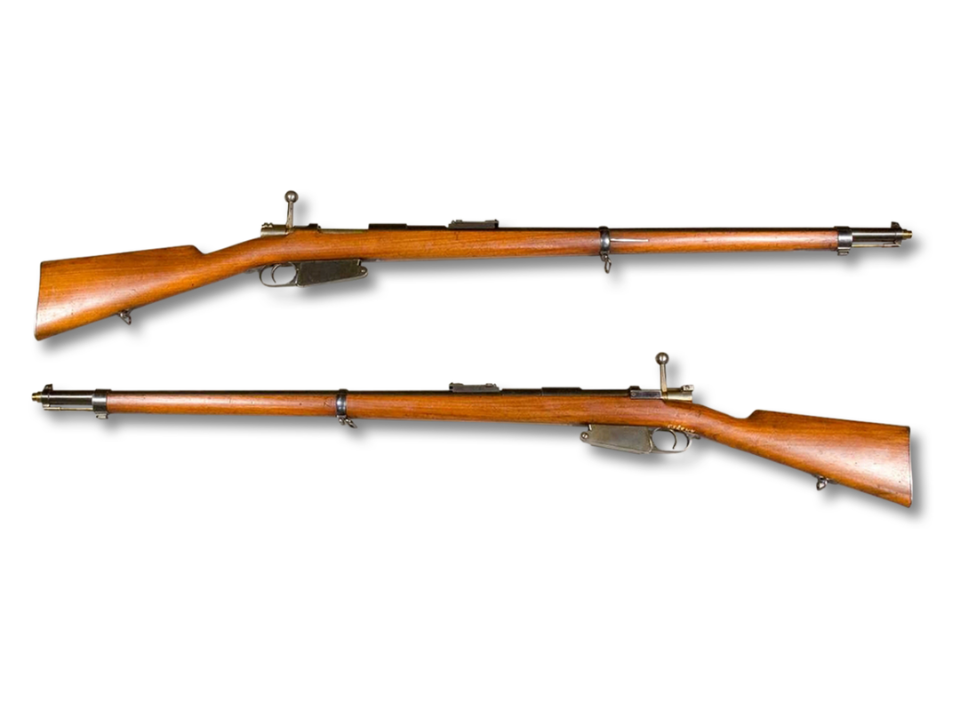
The Mauser Model 1889 was a Belgian-designed bolt-action rifle that introduced the world to the 7.65×53mm Mauser cartridge. Its innovative design featured a five-round detachable box magazine and a robust bolt-action mechanism. The rifle was adopted by several countries, including Belgium, Turkey, and Argentina, and saw service in various conflicts, including the First Balkan War and World War I.
The Model 1889’s design influenced future military rifles, including the German Gewehr 98. Its historical significance and the role it played in early 20th-century warfare make it a prized possession for firearm collectors and historians. The rifle’s production ceased in the early 20th century, adding to its rarity and value. Depending on condition and markings, the Mauser Model 1889 can be valued around $1,173.15.
Gewehr 98
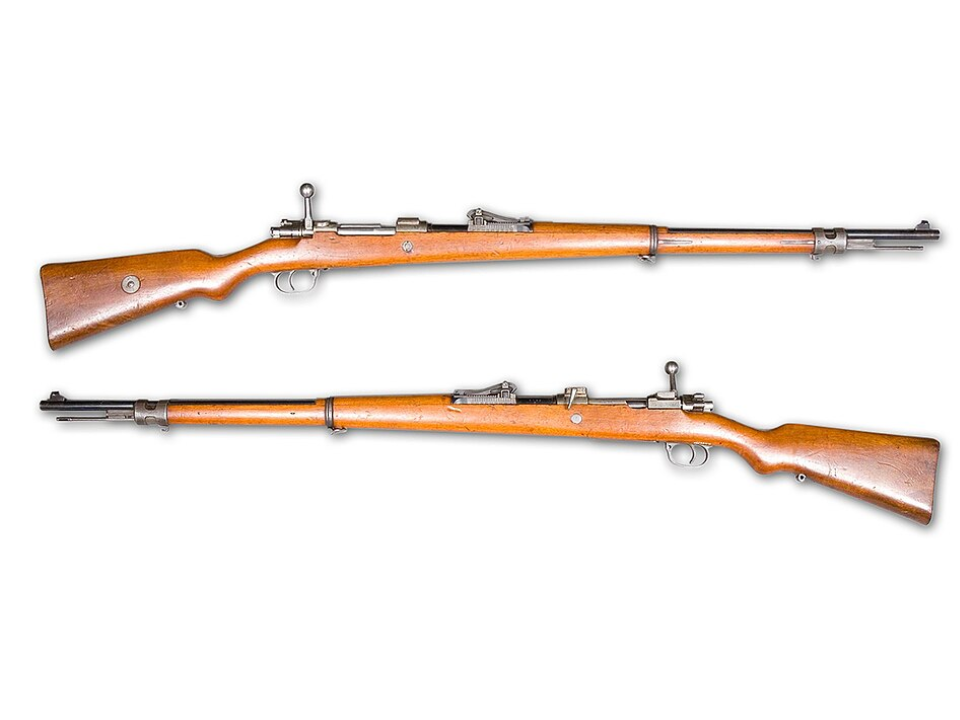
The Gewehr 98 was the standard-issue rifle for the German Empire during World War I. Designed by Paul Mauser, it was chambered in 7.92×57mm Mauser and featured a five-round internal magazine loaded via stripper clips. Its bolt-action mechanism was renowned for its strength and reliability.
The rifle’s design influenced many subsequent military firearms, including the American Springfield M1903 and the British SMLE. Its service during the Great War and its impact on firearm development make it a significant piece for collectors interested in early 20th-century military arms. The value of a Gewehr 98 rifle varies, with prices ranging from $500 to over $2,500, depending on condition and markings.
Springfield Model 1903
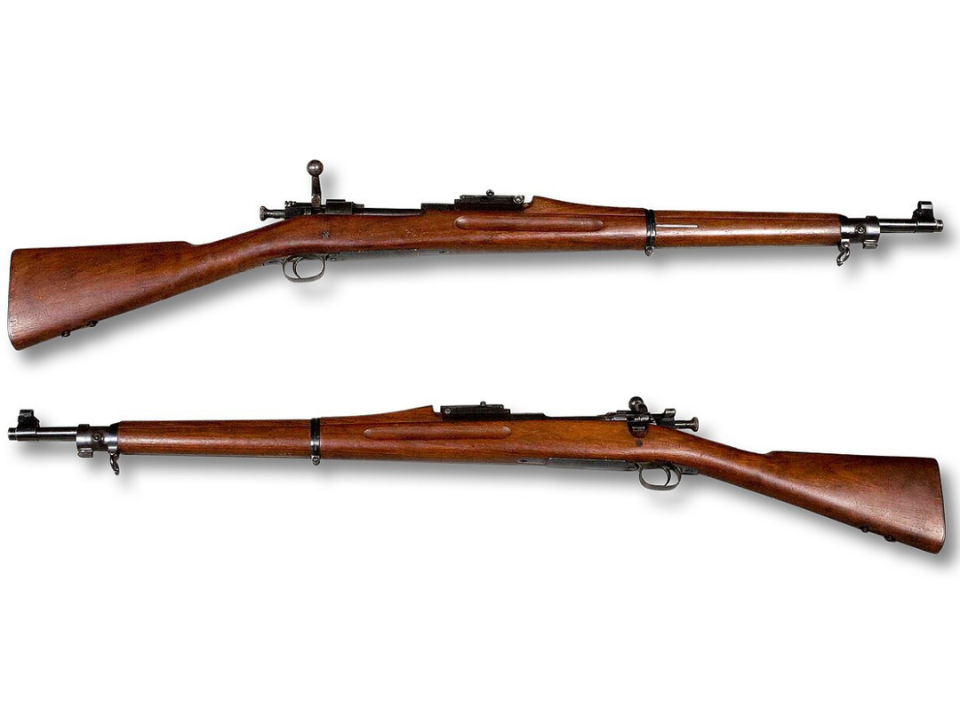
The Springfield Model 1903 was the standard-issue rifle for the United States military during World War I and World War II. Chambered in .30-06 Springfield, it was known for its accuracy and reliability. The rifle featured a five-round internal magazine and a bolt-action mechanism.
Its design was influenced by the German Mauser 98, with modifications to suit American manufacturing capabilities. The Model 1903 played a pivotal role in American military history, and its variants, including sniper models, are highly sought after by collectors. The value of a Springfield Model 1903 varies, with well-maintained examples ranging from $375 to $850.
Steyr-Mannlicher M1895
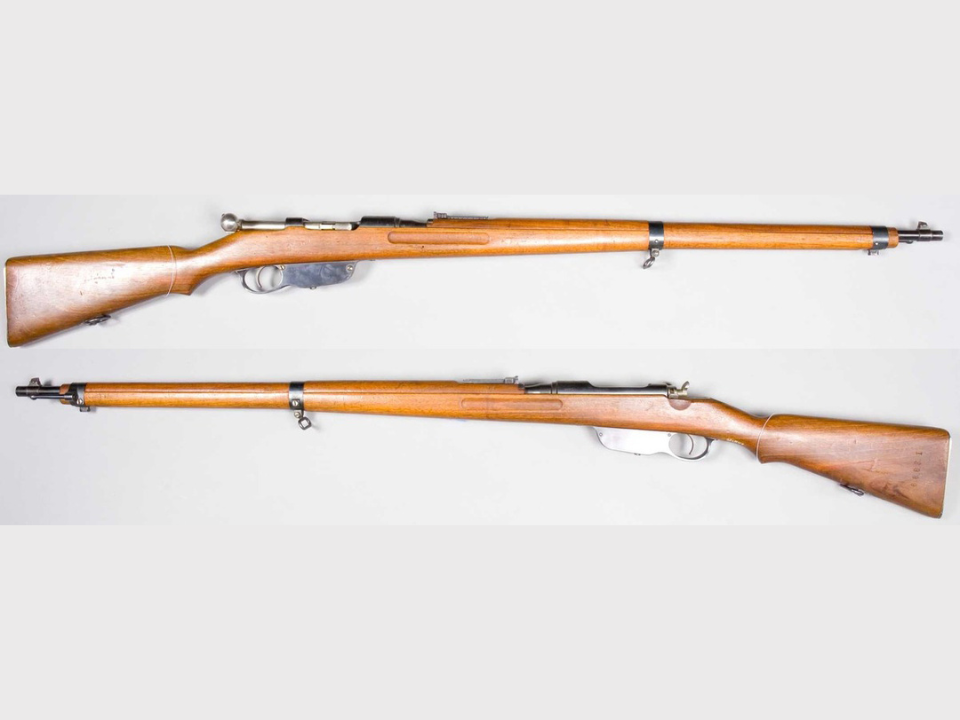
The Steyr-Mannlicher M1895 was an Austrian bolt-action rifle introduced in 1895. Chambered in 8×50mmR Mannlicher, it featured a straight-pull bolt-action mechanism, allowing for faster cycling compared to traditional bolt-action rifles. The rifle was adopted by the Austro-Hungarian Army and saw service during World War I.
Its unique design and the straight-pull action made it stand out among contemporary rifles. The M1895’s service history and distinctive features make it a rare and desirable item for collectors of early 20th-century military firearms. The value of a Steyr-Mannlicher M1895 rifle varies, with prices ranging from $500 to $1,500, depending on condition and markings.
Mosin-Nagant 1891/30
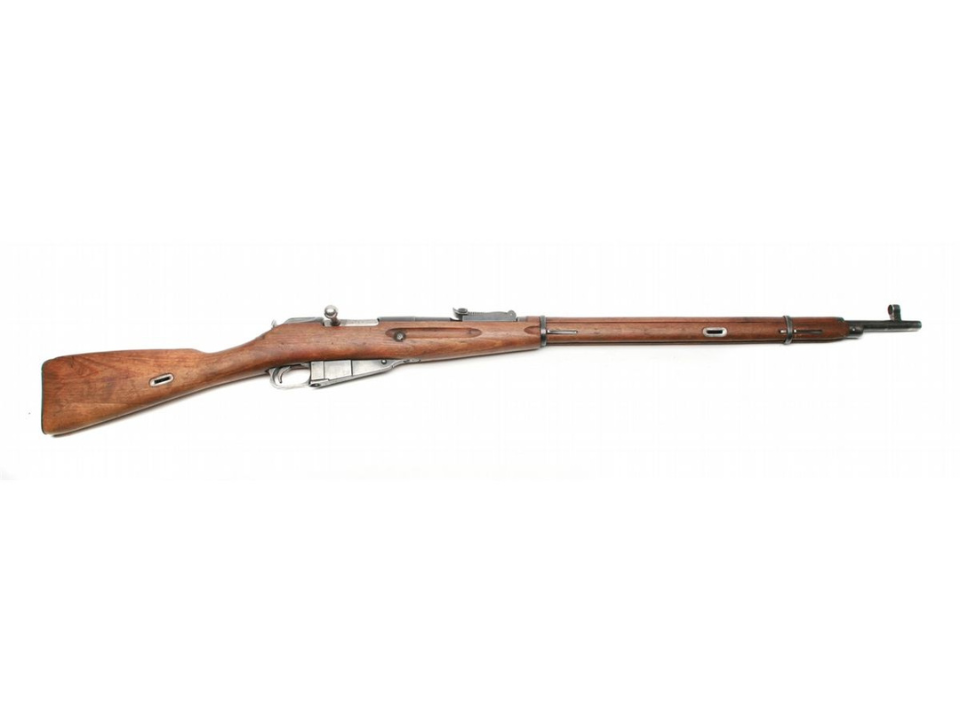
The Mosin-Nagant 1891/30 is a Soviet bolt-action rifle that became one of the most widely produced rifles in the 20th century. Chambered in 7.62×54mmR, it was adopted by the Russian Empire in 1891 and saw widespread use in World War I, the Russian Civil War, and World War II. The rifle featured a five-round internal magazine and a robust bolt-action system that earned it a reputation for reliability under harsh conditions.
While it was mass-produced, the 1891/30’s role in significant global conflicts and its unique historical significance have made it a sought-after piece for collectors. The rifle’s variants, including sniper models, are highly valued and can command prices ranging from $300 to over $1,000 depending on condition and rarity.
Krag-Jørgensen Model 1892
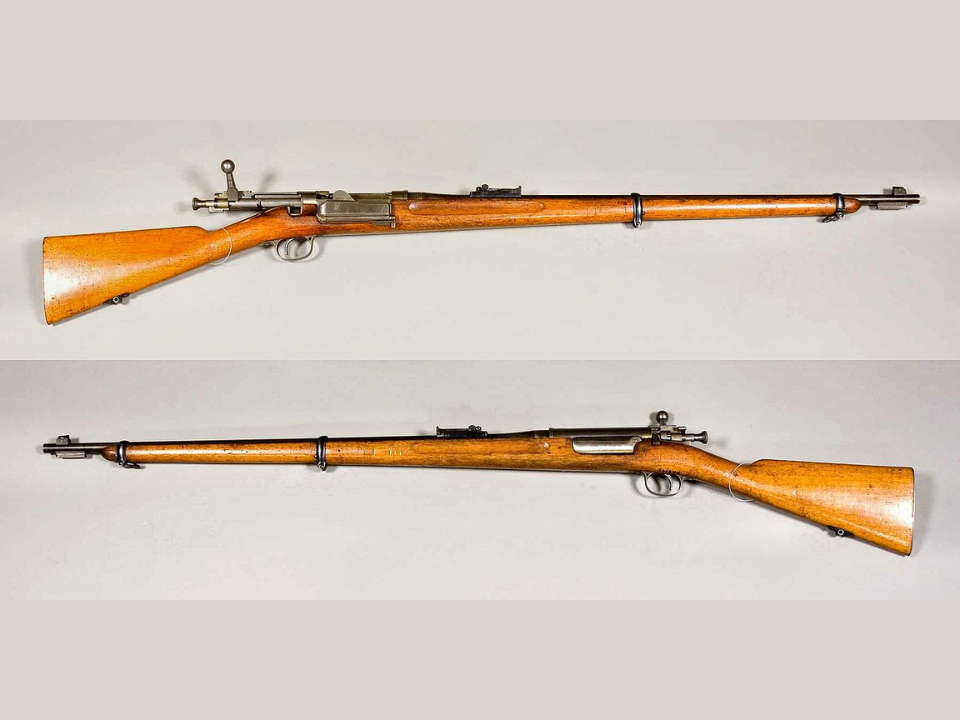
The Krag-Jørgensen Model 1892 is a Norwegian bolt-action rifle that was adopted by the Norwegian military in 1894 and saw service in various conflicts, including World War I and World War II. Chambered in 6.5×55mm Swedish, the Krag-Jørgensen is known for its smooth, controlled feed system, allowing for reliable cycling of rounds from its five-round internal magazine. It is one of the first military rifles to utilize a side-loading magazine, which set it apart from other rifles of its time.
The Krag-Jørgensen Model 1892’s distinctive loading mechanism and its service with the Norwegian military make it a standout among early 20th-century firearms. The value of a Krag-Jørgensen Model 1892 rifle varies, with prices ranging from $1,000 to $2,500, depending on condition and markings.
Ross Rifle Model 1910
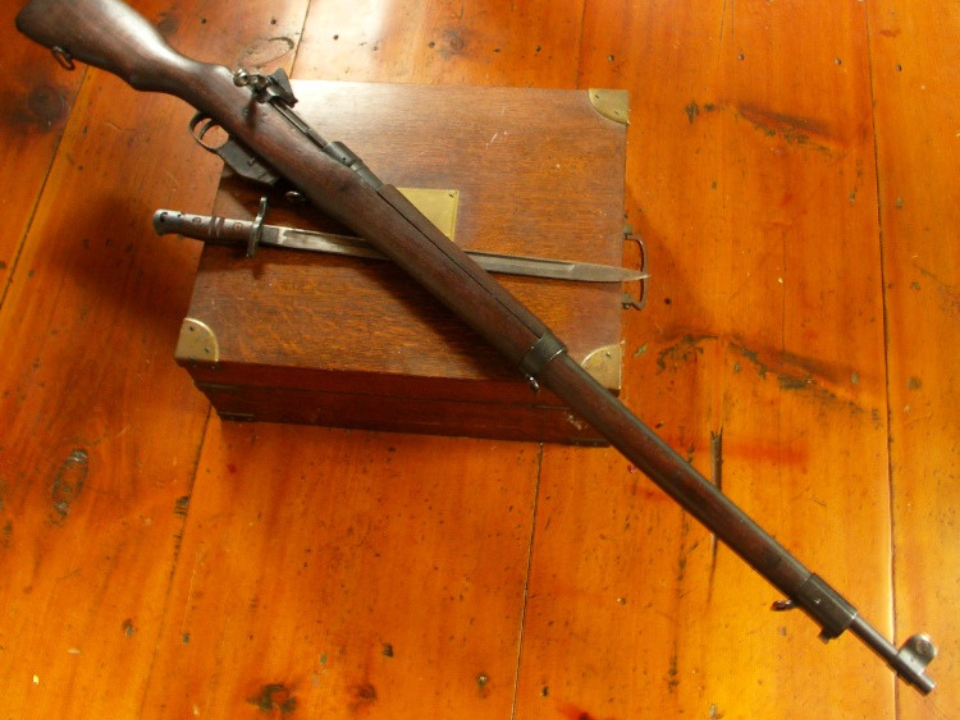
The Ross Rifle Model 1910 was a Canadian bolt-action rifle designed in the early 1900s. Chambered in .303 British, it was intended to serve as a military firearm for Canadian forces during World War I. The M10 had a five-round internal magazine and was known for its accuracy, though it was ultimately plagued by reliability issues in the field.
Despite its shortcomings, the Ross Rifle remains an important part of Canadian military history. Collectors of World War I firearms often seek out this rifle due to its limited production and unique place in history. In good condition, a Ross Rifle Model M10 can sell for around $800 to $1,500.
P14 Enfield
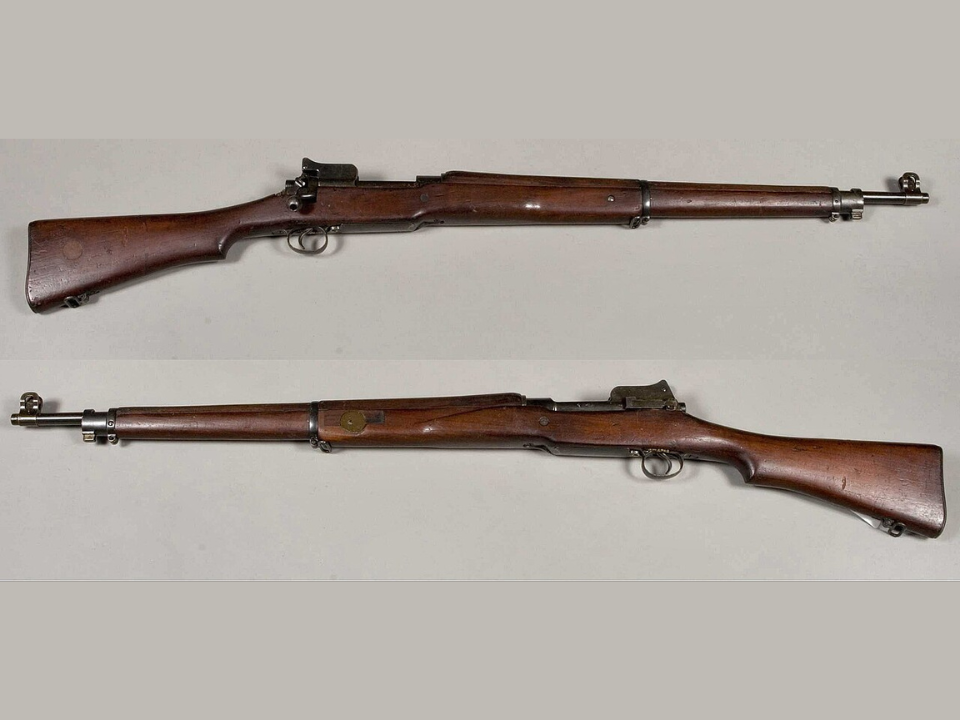
The P14 Enfield was a British-designed bolt-action rifle, chambered in .303 British, developed in the early 1900s as a replacement for the Lee-Enfield rifle. Its design was based on the American P17 rifle, and it became widely adopted by the British Army during World War I. The P14 Enfield featured a five-round internal magazine and a robust bolt-action mechanism known for its reliability and accuracy.
The rifle was used extensively during the war and was highly regarded by soldiers for its performance in the trenches. In addition to its military history, the P14 is a valuable collector’s piece, with well-preserved examples fetching anywhere from $500 to $1,200 depending on condition and markings.
This article originally appeared on Avocadu.
